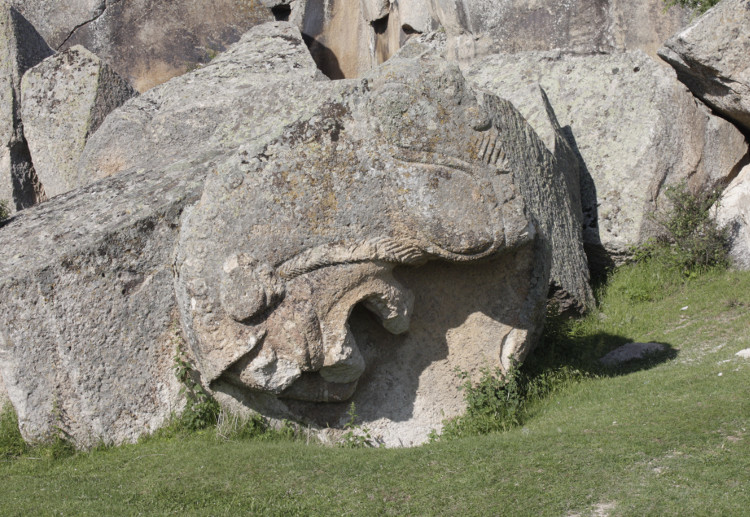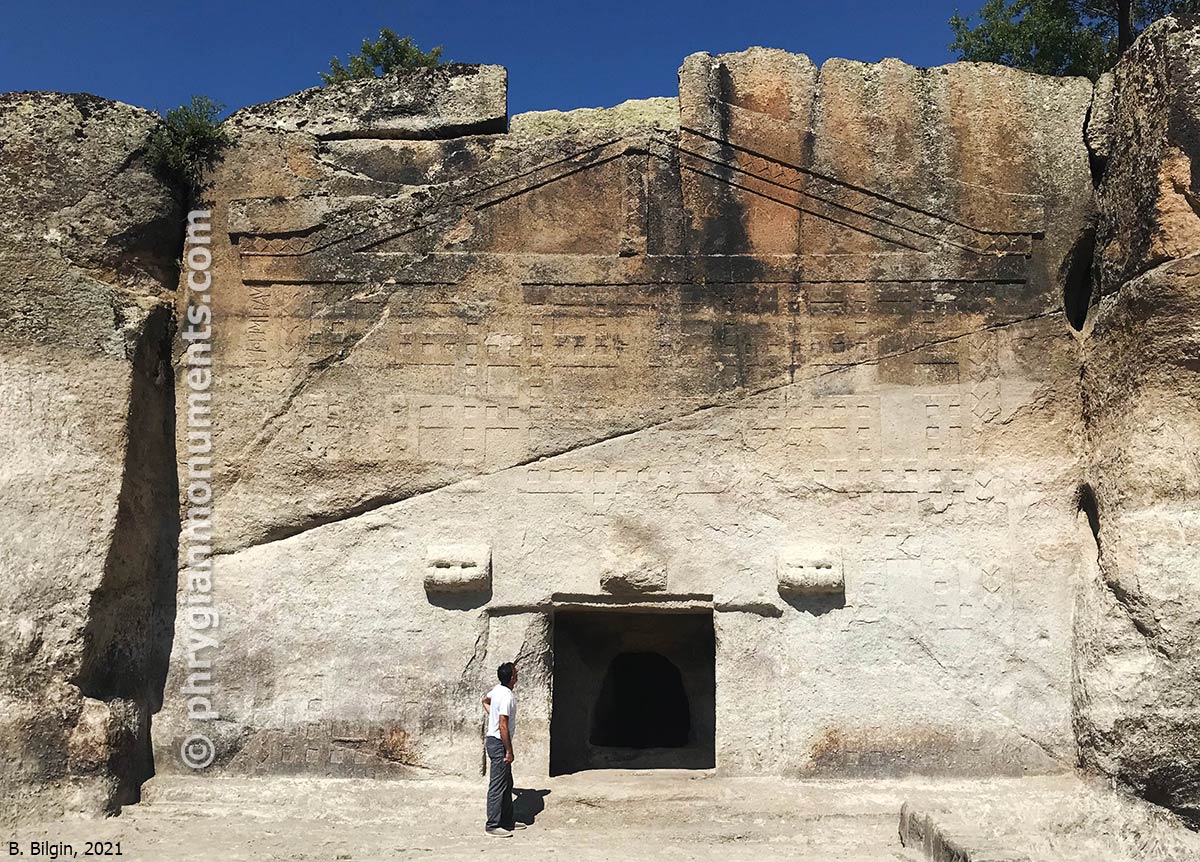Secrets etched in stone: Today, we travel 150 years from a view captured by Guillaume Berggren (1870s) to the Yılantaş Rock Tomb’s present majesty.
Göynüş Vadisi, located in the area known as the Phrygian Valley, is a long and narrow valley surrounded by high cliffs of volcanic tuff. The old name of the valley – Köhnüş – derives from the Turkish word köhnemiş, which means the area damaged by weather conditions.

The valley lies at the foot of Mount Türkmen, from the south is restricted by Aslankayalar rocks, from the west – by Türkmen formations, and from the north- Yokhalil outcrop. In the center of the valley rises the hill where there are the ruins of fortress Köhnüş fortress. In Göynüş Valley there are numerous traces left by the Phrygian civilization. Among them, the most impressive are two rock monuments, now called Aslantaş and Yılantaş.
Archaeological research:

The area of Göynüş Valley was first examined by a Scottish archaeologist William Mitchell Ramsay in the years 1884-1887. He identified two monumental tombs and another Phrygian monument called Maltaş.
In the mid-twentieth century a Dutch archaeologist, Caroline Henriette Emilie Haspels, conducted another survey of the valley and found many more Phrygian rock monuments, carved in hard to reach areas of Aslankayalar and Akkuş Yuvası massifs. In 1995-1996, two Turkish archaeologists – Taciser Tüfekçi Sivas and Hakan Sivas – discovered two altars of rock, located in Boncuklu Inler Mevkii and near the Maltaş monument.

Sightseeing:
To recapitulate, in Göynüş Valley there is a large number of Phrygian monuments, including 40 tombs, forming the largest Phrygian necropolis known to researchers so far. Additionally, in the valley, one can find rock tombs from the Roman period, and Byzantine churches and chapels carved into the rocks. The oldest Phrygian monuments of Göynüş Valley date back to the period from the eighth to the sixth century BC.
Two of the most fascinating Phrygian tombs are located just off the road crossing the valley. The first one is called Aslantaş or i.e. the Lions’ Rock. This monument was carved in the northern vertical wall of a cubic rock, about 11 meters high. The façade of the tomb is decorated with reliefs of two mighty lions. The animals are depicted standing upright on their hind legs, as if preparing to jump. Their jaws are open, solidified in a silent roar.

Between the silhouettes of the standing lions, there is a square entrance to the tomb. The chamber of this tomb was carved on a rectangular plan and is decorated in a sophisticated way. Below, at the feet of the roaring lions, there are much worse preserved reliefs depicting another two lions in a sitting position.
The second great Phrygian tomb is known locally as Yılantaş or the Snakes’ Rock. In fact, the monument does not depict any snakes, but lions, and the researchers describe it as Kırık Aslantaş (i.e. the Broken Lions’ Rock). The misunderstanding as to the name and the original appearance of the monument is due to its poor condition. Its original façade had been split and then broke up into pieces, spread out on the ground, most likely as a result of an earthquake.
Related Post
A shocking documentary proves that mermaids do exist
SHOCKING Revelation: Thuya, Mother of Queen Tiye, Was the Grandmother of Akhenaten and Tutankhamun—What Ancient Egyptian Secrets Did She Leave Behind?
Breaking News: Astonishing Discoveries at Karahan Tepe Confirm an Extraterrestrial Civilization is Hiding on Earth, and NO ONE Knows!
Breaking News: Researchers FINALLY Discover U.S. Navy Flight 19 After 75 Years Lost in the Bermuda Triangle!
NASA’s Secret Investigation: Uncovering the Astonishing Mystery of the UFO Crash on the Mountain!
Explosive UFO Docs LEAKED: Startling Proof That Aliens Ruled Ancient Egypt!